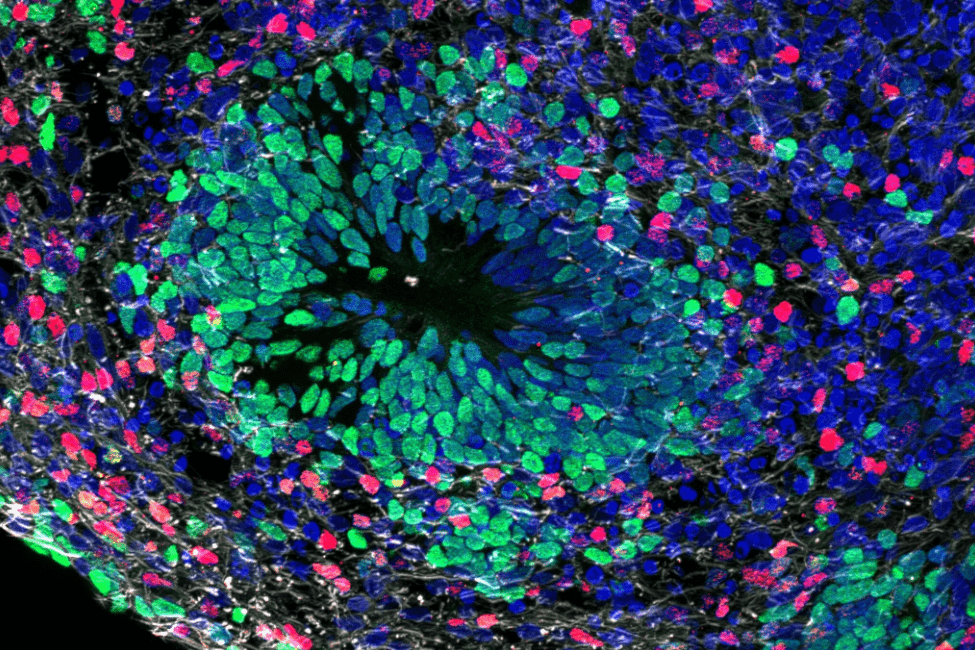Category: health news
-

Working to improve clarity for patients assessing their genetic breast cancer risk
“I would say there are 2,500 variants conservatively that we hope to be able to curate right off the bat based on these assessments,” Cline said. “For women who carry these variants, that means not carrying the uncertainty.”
-

UCSC’s David Deamer and Mark Akeson honored for invention of nanopore sequencing
Today, two UC Santa Cruz researchers were honored at the Library of Congress for the invention of nanopore sequencing, which became a new and revolutionary method to read DNA and RNA. David Deamer and Mark Akeson, both emeritus professors of biomolecular engineering at the Baskin School of Engineering, received the American Association for the Advancement…
-

Human Pangenome Named a GA4GH Driver Project
GA4GH Driver Projects are real-world initiatives that help build and implement GA4GH standards, tools, and frameworks. They give voice to the broader genomics community and ensure GA4GH products serve real needs.
-

Innovation Catalyst Grants Fund Braingeneers Research
Haussler and Teodorescu were awarded $50,000 for their work in developing a revolutionary approach to cell culture that allows for more efficient testing on human organoids. Their innovation promises to significantly enhance the realism and scalability of experiments in biological research and will allow for new discoveries in cancer treatment, stroke, heart attack, and brain…
-

New protocols make long-read sequencing feasible on larger scale
Researchers at UC Santa Cruz’s Computational Genomics Lab and their collaborators have released new wet-lab and computational protocols that will make long-read sequencing feasible for large genomics projects. These protocols, which they have already implemented in a National Institute of Health project for Alzheimer’s research, will allow researchers to characterize regions of the genome that…
-

Novel device combines nanopores with electronic signals for disease detection
In living organisms, cells have a very high capacity to process and communicate information by moving molecules or ions through tiny channels that span the cell membrane. UC Santa Cruz Professor of Electrical and Computer Engineering Marco Rolandi’s lab and collaborators at MIT have created a device that mimics this biological concept in order to…
-
New blood test for noncoding RNA significantly improves cancer detection
Cancer is most treatable in its early stages, so finding innovative and non-invasive methods to diagnose cancer early on is crucial for fighting the disease. Liquid biopsies, which require just a simple blood draw, are an emerging technology for non-invasively testing for cancer using DNA or RNA sequencing of a patient’s blood.
-

Ten Mysteries of the Y Chromosome
The Y chromosome is full of mysteries. What will researchers discover now that they have finally completed sequencing it? We share our top ten questions about the Y chromosome, and the answers we have so far!
-

Scientists release the first complete sequence of a human Y chromosome
For decades, the Y chromosome – one of the two human sex chromosomes – has been notoriously challenging for the genomics community to sequence due to the complexity of its structure. Now, this elusive area of the genome has been fully sequenced, a feat that finally completes the set of end-to-end human chromosomes and adds…
-

A childhood cancer survivor becomes a cancer researcher
Robert McCabe of Anchorage, Alaska, is a 15-year-old avid bowler, a fan of baseball and basketball, and a rising high school sophomore who hopes to be an engineer one day. He is also a pediatric cancer survivor, and most recently, a pediatric cancer researcher. This summer, he helped to sequence and analyze a tumor sample…
-
St. Baldrick’s Foundation grant will expand pediatric cancer research at UCSC
A new $100,000 grant from the St. Baldrick’s Foundation will provide UC Santa Cruz’s Treehouse Childhood Cancer Initiative funding to expand efforts to study rare pediatric cancers.
-

UCSC researcher is on the cutting edge of RSV vaccines
UC Santa Cruz Genomics Institute affiliate Rebecca DuBois is creating virtual 3D maps of viral proteins to find weaknesses in RSV, the respiratory disease that contributed to 2022’s “tripledemic” along with cases of flu and COVID-19.